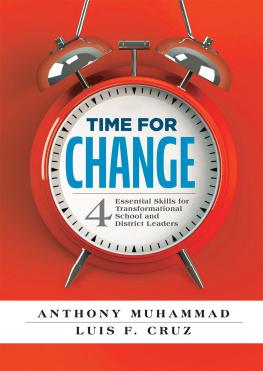Cover

| title | : | Ten Steps to Educational Reform : Making Change Happen |
| author | : | Palestini, Robert H. |
| publisher | : | Scarecrow Press |
| isbn10 | asin | : | 0810838648 |
| print isbn13 | : | 9780810838642 |
| ebook isbn13 | : | 9780585385266 |
| language | : | English |
| subject | Educational change, School improvement programs, Educational planning. |
| publication date | : | 2000 |
| lcc | : | LB2822.8.P24 2000eb |
| ddc | : | 371.2/07 |
| subject | : | Educational change, School improvement programs, Educational planning. |
Page i
Ten Steps to
Educational Reform
Making Change Happen
Robert H. Palestini

Page ii
SCARECROW PRESS, INC.
Technomic Books
Published in the United States of America
by Scarecrow Press, Inc.
4720 Boston Way, Lanham, Maryland 20706
http://www.scarecrowpress.com
4 Pleydell Gardens, Folkestone
Kent CT20 2DN, England
Copyright 2000 by Robert H. Palestini
All rights reserved. No part of this publication may be reproduced, stored in a retrieval system, or transmitted in any form or by any means, electronic, mechanical, photocopying, recording, or otherwise, without the prior permission of the publisher.
British Library Cataloguing in Publication Information Available
Library of Congress Cataloging-in-Publication Data
Palestini, Robert H.
Ten steps to educational reform : making change happen /
Robert H. Palestini.
p. cm.
Includes bibliographical references (p. ) and index
ISBN 0-8108-3864-8 (alk. paper)ISBN 0-8108-3917-2 (paper : alk. paper)
1. Educational change. 2. School improvement programs. 3. Educational planning
I. Title: 10 steps to educational reform. II. title.
LB2822.8 .P24 2000
371.207dc21 00-056344
 The paper used in this publication meets the minimum requirements of American National Standard for Information SciencesPermanence of Paper for Printed Library Materials, ANSI/NISO Z39.481992.
The paper used in this publication meets the minimum requirements of American National Standard for Information SciencesPermanence of Paper for Printed Library Materials, ANSI/NISO Z39.481992.
Manufactured in the United States of America.
Page iii
Contents
Introduction
|
Chapter 1: Establishing a Climate for Change
|
Chapter 2: Assessing a Need
|
Chapter 3: Creating a Sense of Urgency
|
Chapter 4: Assessing Favorable and Opposing Forces
|
Chapter 5: Selecting Alternatives
|
Chapter 6: Promoting Ownership
|
Chapter 7: Providing Staff Development
|
Chapter 8: Operationalizing Change
|
Chapter 9: Evaluating Change
|
Chapter 10: Institutionalizing Change
|
Chapter 11: Schoolwide Reform Models
|
Appendix A
|
Appendix B
|
Index
|
About the Author
|
Page iv
This page intentionally left blank.
Page 1
Introduction
Education, particularly urban public education, seems to be in a continual state of crisis. None of its constituencies seems to be satisfied with its outcomes. There is no dearth of remedies, however. Educational research has produced a variety of reforms that the scholars claim will resolve many of the problems encountered in American education. Until now, however, the major problem has been how to implement these reforms effectively. There have been sporadic successes, but generalizing from these effective models has been problematic.
Reforms such as site-based management, charter schools, clustering, whole language instruction, cooperative learning, and outcomes-based education all have their advocates. Pilot programs using these approaches have proved successful. The frustration lies in how to implement these reforms universally so that the schools where they are effective become the rule rather than the exception. In a nutshell, the issue becomes: how do we successfully effect change?
Human instinct seems to prefer the status quo. Intellectually, however, we all seem to realize that to progress, we need to experience change. Collectively, we have bought into Edwards Demings notion that for any institution to thrive, continuous improvement is an absolute necessity. And continuous improvement implies change. But none of this rationalizing makes it any easier to accept. When dealing with the process of change, we seem to operate on a visceral level. Our
Page 2
security need seems to militate against any sort of significant change. Nevertheless, if our schools and school districts are to progress, we need to overcome our instincts and implement the reforms that will make them effective in educating our young people.
In an earlier work, The Ten-Minute Guide to Educational Leadership, I suggest that if the educational leader systematically focuses on ten aspects or his or her institution each day, that administrator will be effective. These ten components include the schools organizational structure, its organizational climate, leadership, motivation, communication, planning, decision-making and conflict management processes, power distribution, and attitude toward change. Of these essential elements, I believe that an institutions tolerance of and ability to change is the most important element for success. I also believe that mastering the ability to effect change successfully to transform an institution is the culminating activity of the effective educational leader.
Successfully effecting change requires the educational leader to have mastered all of the other elements necessary for promoting organizational effectiveness. To effect successful change, the educational administrator must have outstanding leadership skills, ensure that the organizational structure is appropriate, engender a climate of trust and respect, motivate his or her colleagues to achieve a vision, communicate effectively, plan strategically, incorporate appropriate decision-making techniques, effectively manage conflict, and empower faculty and staff. This is a daunting taskso daunting that the average educational administrator is not able to cope with it. As a result, successful implementation of change in the form of educational reform remains the exception rather than the rule; and effective schools remain the exception rather than the rule.
An Integrated Approach to Change
The literature is replete with various suggested change processes. Many of them contain elements that are helpful in leading to successful transformation, but none contains all of the necessary elements. As
Next page






 The paper used in this publication meets the minimum requirements of American National Standard for Information SciencesPermanence of Paper for Printed Library Materials, ANSI/NISO Z39.481992.
The paper used in this publication meets the minimum requirements of American National Standard for Information SciencesPermanence of Paper for Printed Library Materials, ANSI/NISO Z39.481992.